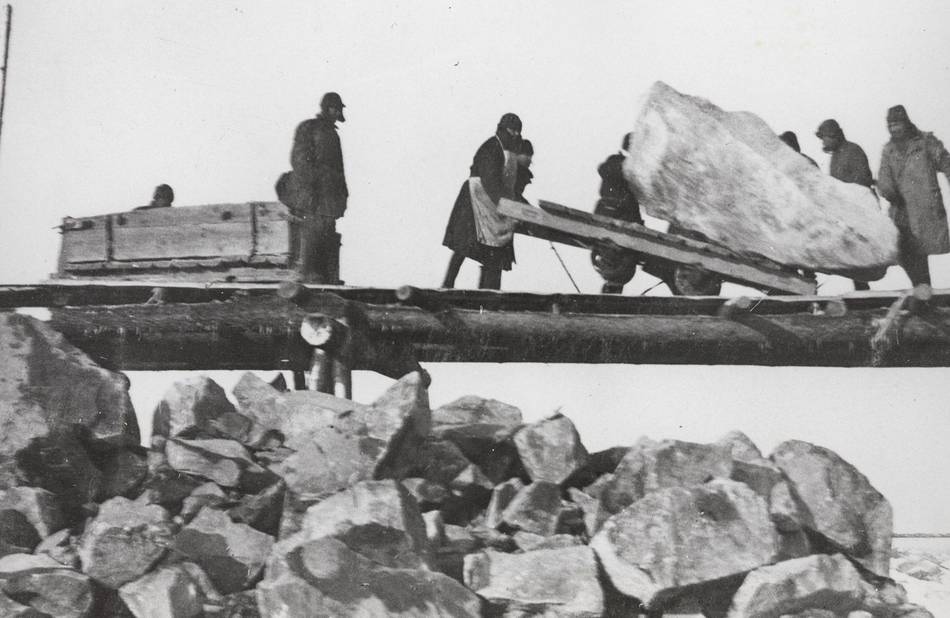Traces of the Gulag 1929–1956
An exhibition by the Human Rights Center “Memorial” Moscow and the Buchenwald and Mittelbau-Dora Memorials Foundation in cooperation with the Stiftung Schloss Neuhardenberg.

The "Gulag" - an acronym for "Glavnoe Upravlenie ispravitel'no-trudovykh Lagerei" (English: Chief Administration of Correctional Labour Camps) - became anchored in our collective consciousness ever since the release of Alexandr Solzhenitsyn's book "The Gulag Archipelago" which described the extensive system of Soviet repression, forced labour camps, prisons, penal camps, and places of banishment. The Buchenwald and Mittelbau-Dora Memorials Foundation cooperated with the Memorial Human Rights and Humanitarian Society in Moscow, founded by Andrei Sakharov in 1988, and external experts to create an extensive touring exhibition on the repressive system of Soviet Gulags from 1929 to 1956.
The victims' experiences were the focus of the exhibition. However, the programme also included other issues explored in "The Gulag Archipelago" such as the mechanisms of terror and repression and the exploitation of forced labour to achieve Stalin's vision of societal reorganization. Memorial Moscow has agreed to provide items and documents from its collection which have never been shown before - including eye-witness reports, photos, films and artworks produced in the Gulags which were first discovered at the former camps in the late 1980s. These exhibits were supplemented by additional works on loan from the State Archives of the Russian Federation and the research office at the University of Bremen (works from the estate of Evgenija Ginzburg and Lev Kopelev).
Despite the partial access to the Russian archives, very little has become known about the Gulag system in public circles. Therefore, this exhibition aimed to make us aware of this deficit and help reduce it. Furthermore, it hoped to encourage Russia to re-examine the legacy of the special Soviet labour camps more intensively.
The exhibition was accompanied by an extensive book publication and working material for historic-political education purposes in school. German, Russian and other international scholars discussed specific themes of the exhibition in a series of lectures.
Research directors: Prof. Dr. Irina Šcerbakova (Memorial Moscow), Prof. Dr. Volkhard Knigge (The Buchenwald and Mittelbau-Dora Memorials Foundation)
Contact
Stiftung Gedenkstätten Buchenwald und Mittelbau-Dora
99427 Weimar-Buchenwald
